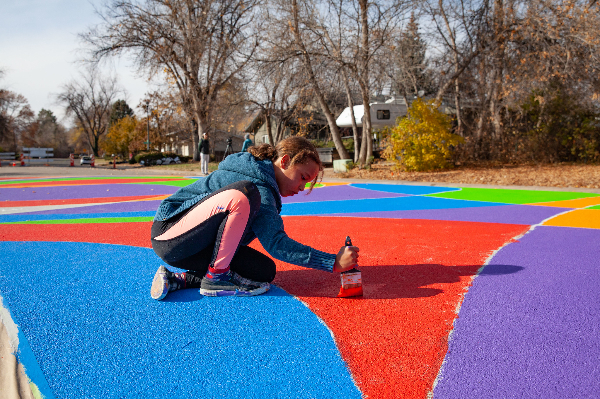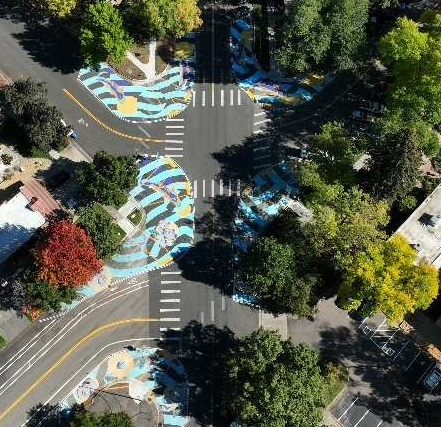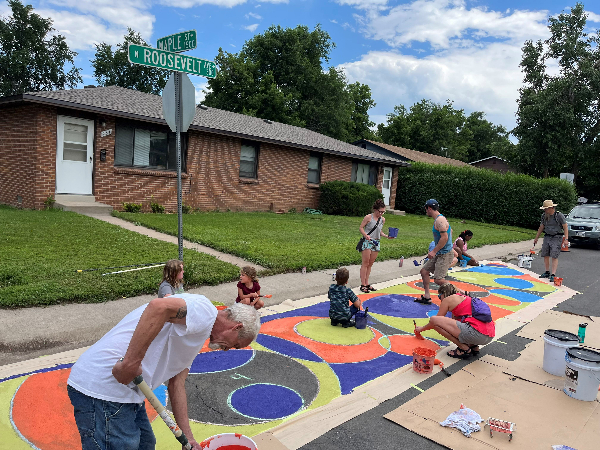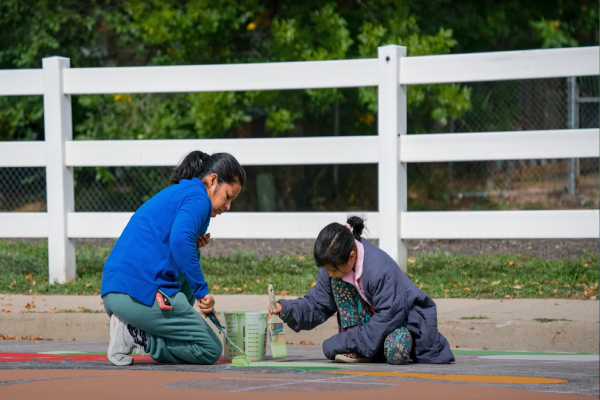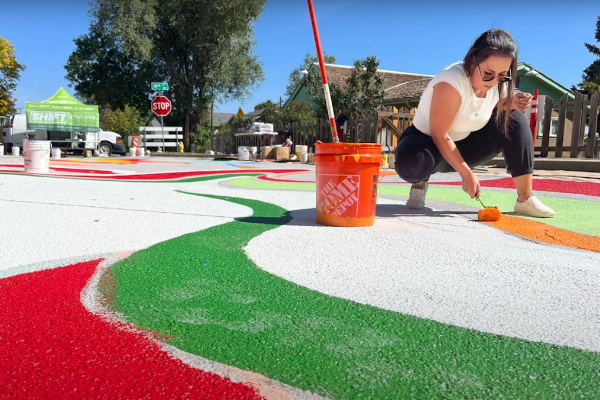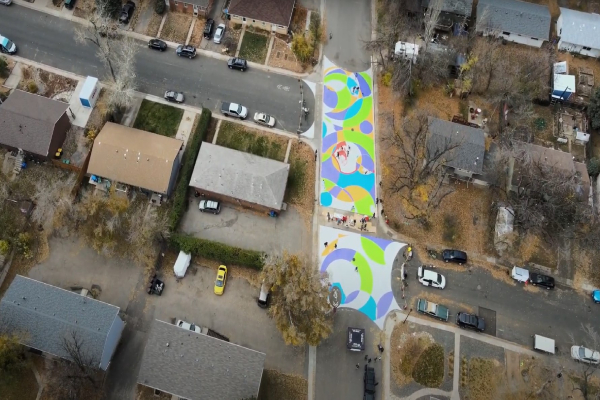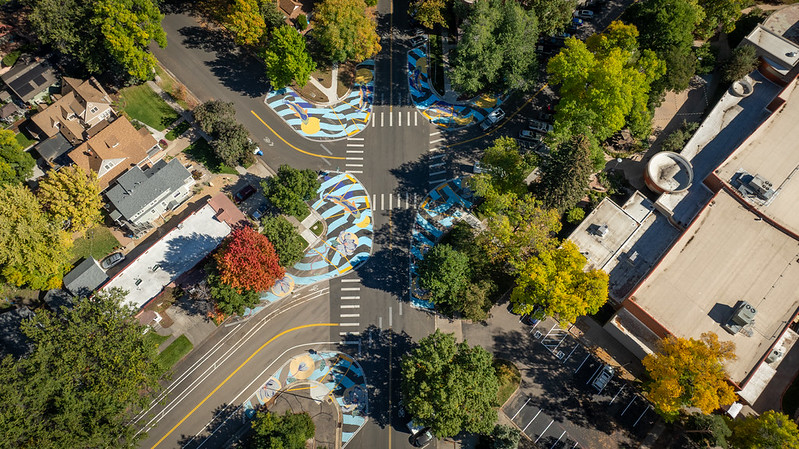
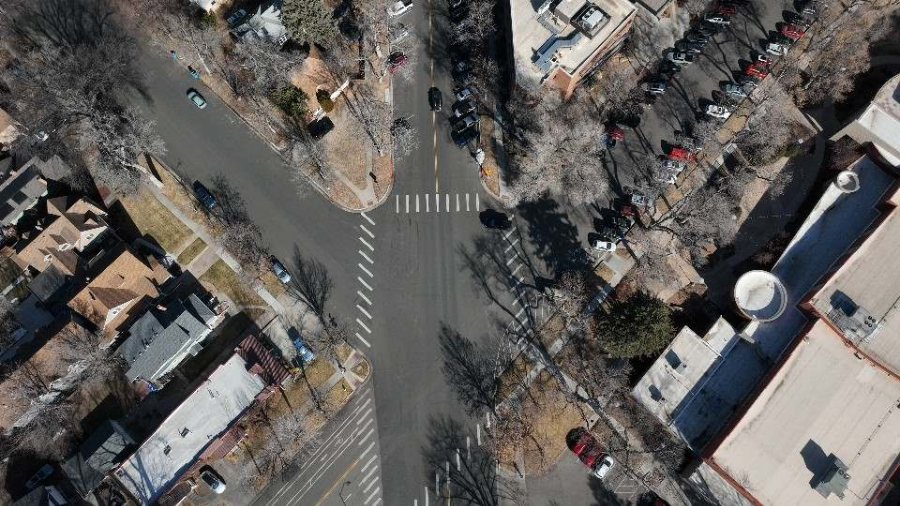
Why Asphalt Art?#
Public art can be found throughout Fort Collins. These projects offer moments of beauty, introspection, and curiosity in our everyday lives.
The Asphalt Art program brings public art into unique spaces to enhance the beauty of our community while creating safer streets. Studies have shown the placement of art in roadways helps calm traffic and lower speeds; intersections with asphalt art have fewer crashes and safer pedestrian street crossings.
Asphalt Art Installation at Canyon/Magnolia/Sherwood#
Project Overview: Installation of curb-extensions at a five-point intersection in the heart of downtown Fort Collins accomplished the narrowing of vehicular travel lanes, shortened pedestrian crossing distances and improved sightlines. Curb extensions, totaling approximately 16,000 square feet, were defined by traffic striping, plastic delineator posts, asphalt art and ADA compliant infrastructure. Using these applications together we were able to reclaim a large expanse of asphalt for pedestrian refuge, reduce traffic speeds and ignite neighborhood centers. Dramatically reworking the intersection geometry by converting a five-point intersection into a four-way intersection and a separate T-intersection also improved sightlines for road users and addressed long-standing concerns of right-of-way confusion.
Installation title: Namesake
Artist: Jess Bean
Speed reduction post installation: 22%
Asphalt Art at Roosevelt/Maple#
Installation overview: Installation of curb extensions at an offset intersection has helped to reduce speeds, improve sight lines, and shorten pedestrian crossing distances. These works of art are both beautiful and an effective traffic calming method.
Installation title: Circles on Roosevelt & Maple
Artist: Brian Barrett
Speed reduction post installation: 17%
Each neighborhood has a story to tell#
Every Asphalt Art project represents the story of that individual community: the past, present and future of the people who call that neighborhood their home. Due to the rapid deterioration of the asphalt art installations on Romero, Hickory and Alta Vista Streets, these murals were removed in 2023. Based on our experience with these projects, we started using more durable paint and moved the art to areas that aren’t driven over for future projects. FC Moves is grateful to these communities for all the time and energy invested in helping us test out and learn from the first asphalt art installations in Fort Collins.
Listen to members of these communities tell their story in their own words below.
This collection of oral stories was made possible with grant funding from the National Association of City Transportation Officials.
